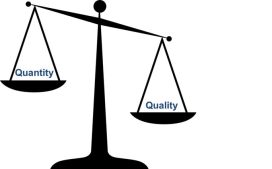Alternative Risk-Based Payment Models: An Overview
February 29, 2016 at 8:30 PM rachelsmull 1 comment
Alternative Risk-Based Payment Models: An Overview
Throughout our series of blogs, we at MedSpan Research have been exploring trends in the healthcare industry (such as care pathways and high-deductible health plans). In this blog, we will explore another major change in healthcare: risk-based alternative payment models.
With healthcare reform, there has been a shift in focus to quality of care, rather than quantity of care. With this shift in focus, a variety of risk-based alternative payment models have emerged and are replacing the traditional fee-for-service payment model.
First, let’s discuss the traditional fee-for-service payment model most of us are familiar with. With fee-for-service, physicians are paid separately for each service provided, which can include office visits, tests, and/or any procedures performed. Physicians are incentivized to provide more services as their payment is based on quantity. Prior to 2011, most health insurance payments were fee-for-service with no ties to quality.
Increasingly, health insurance providers are moving towards tying provider payments to quality. Risk-based alternative payment models hold the medical provider responsible to help manage costs, allowing them to share in the benefits of savings, or making them face penalties if certain metrics are not met.

There are two types of “risk” that can be included in risk-based alternative payment models: upside or downside risk.
- Upside risk: The provider shares in savings, but does not have any financial penalties or loss.
- Downside risk: The provider will share any savings generated or be rewarded bonuses, but they will also incur financial penalties or loss if certain metrics are not met.
Now, let’s briefly examine some of the most common risk-based alternative payment models.
- Shared Savings: This is an upside risk model in which providers and payers share savings for delivering quality care, based on agreed upon metrics, at a cost lower than current budgeted amounts.
- An example of this type of model is the Medicare Shared Savings Program which was established as part of the Affordable Care Act (ACA). This program rewards Accountable Care Organizations (ACOs) for lowering their growth in healthcare costs while meeting performance standards on quality of care. The Centers for Medicare and Medicaid Services (CMS) pioneers many such risk-based payment models. Private payers may be likely to use the programs developed by CMS as blueprints when creating their own risk-based payment models.
- Pay-for-performance (P4P): Providers are reimbursed based on whether they achieve a predetermined set of quality measures for a population. P4P can include upside risk or downside risk.
- CMS’ Physician Quality Reporting System (PQRS) allows physicians to report on a variety of quality measures focused on the patient / caregiver experience, care coordination / patient safety, preventative health, and at-risk population. As of 2015, participation in PQRS is mandatory and physicians will receive a penalty if they do not satisfactorily report on the quality measures.
- Capitation: Physicians or groups of physicians are paid a pre-determined amount for each enrolled person assigned to them per year. They receive the payment for each enrollee whether care is provided or not. This is a type of downside risk as providers are responsible for any potential losses, but also share in savings.
- Bundled payments: Also known as episode-based payments, healthcare providers (either physicians or hospitals) are reimbursed one payment for all services an assigned patient receives during an episode of care. As with capitation, this includes downside risk as the providers may see savings or may see a loss of revenue.
Implementation of risk-based alternative payment models is expected to increase. By 2018, the Department of Health and Human Services (HHS) aims to have 85% of Medicare payments linked to quality[1].
This just scratches the surface of risk-based alternative payment models. As a result of risk-based alternative payment models, pharmaceutical companies and medical device manufacturers are under increasing pressure by providers and payers to demonstrate how their drug or device contributes to improved outcomes or lower healthcare costs. If you are in the healthcare industry, I encourage you to do more research and consider how these models may impact your organization, whether it is through incorporating questions about these models into your market research, exploring your sales strategy, or designing clinical trials.
I hope you found this post informative. Stay tuned for more blogs exploring the ever-changing healthcare environment!
[1] Source: https://www.cms.gov/Newsroom/MediaReleaseDatabase/Fact-sheets/2015-Fact-sheets-items/2015-01-26-3.html (accessed February, 2016)
Entry filed under: Affordable Care Act, fee-for-service, quality improvement program.

1. install ford | July 10, 2018 at 2:59 AM
Luxury vehicles
Alternative Risk-Based Payment Models: An Overview | Access Insights